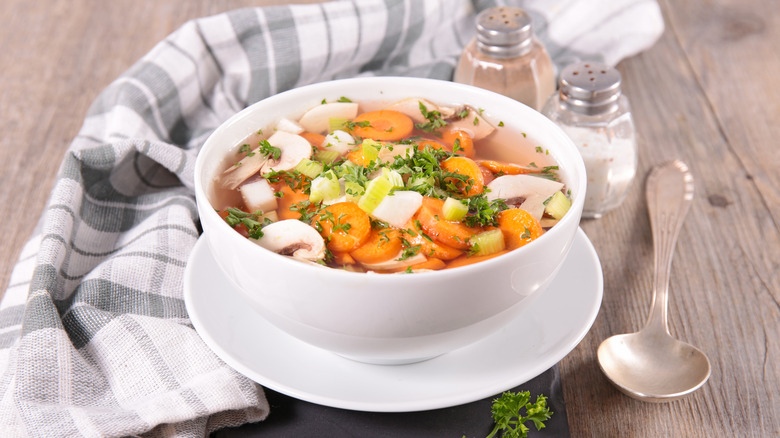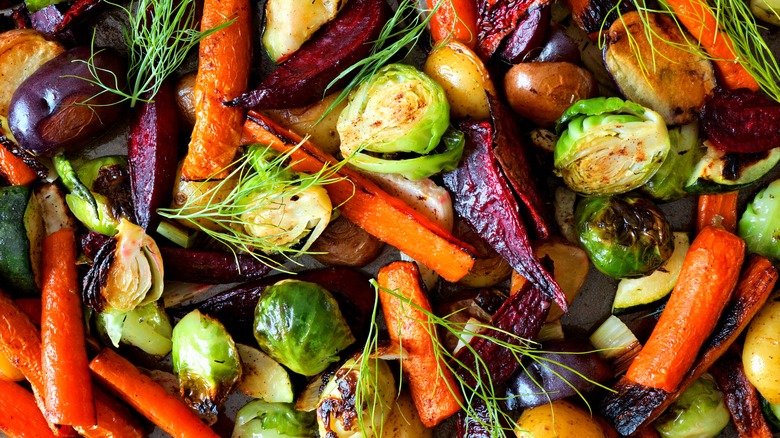Why It Pays To Caramelize Vegetables Before Adding Them To Soup
Warm, cozy, and full of concentrated flavors; these are the things that may come to mind when one thinks about soup. Though to be fair, there are chilled soups and gazpachos that are just as flavorful and perfect for toasty temperatures.
Soups might as well be a separate culinary skill in and of itself because it's easy for them to turn out too thin, too thick, too bland, or chock full of way too many spices. In short, it's easy to mess up soup. Getting those flavors, textures, and consistency damn near perfect is an art, but luckily, there are a few things you can do to help with these aspects. For starters, Simply Recipes suggests a boost of acidity, namely from citrus or vinegar. This can help to add an element of brightness to dishes like avgolemono or chicken noodle soup.
You could also try incorporating some umami profiles into your soup from the likes of tomatoes, mushrooms, potatoes, or carrots, per MSG Dish. As discussed by Ajinomoto, umami is full of complexity and tends to hang around on the palate for a while, especially when compared to sour, sweet, salty, and bitter tastes.
But before you add some of the above vegetables into your soup (or almost any vegetable for that matter), be sure to caramelize them. Yes, it's one small extra step, but it's well worth the effort. Here's why.
An elevation of flavor
First, let's talk about caramelization. Imagine a batch of sliced onions in a pan. As the onions start to cook and soften, the sugars start to disintegrate, transforming those onions into golden-brown slivers with a whole new flavor profile. Gone with the sharp, pungent flavors, and in with the new nutty and toasty elements of caramelization, explains MasterClass.
So which types of vegetables should you caramelize? Anything that is full of sugar (one trick is to look for root vegetables or bulbs). Examples include onions, carrots, leeks, beets, and corn, per Top 40 Recipes. To caramelize them, grilling, broiling, and roasting are all go-to cooking methods (though you can certainly use a slow cooker, crock pot, or a non-stick pan as well, via Betty Crocker). And when prepping the vegetables, be sure to opt for long and thin slices for surface area purposes.
There are also different stages of caramelization, ranging from light to dark. As Azcentral explains, light caramelization involves mild tastes and pale colors. Dark caramelization looks dark and takes on a rich profile. So it's best to decide how caramelized you'd like your vegetables to become before adding them to the likes of a roasted carrot and parsnip soup.
So if you're looking to elevate your next batch of soup, don't just add vegetables haphazardly. Take the time to add some caramelization to them via the above methods for extra sweet and buttery flavors.

